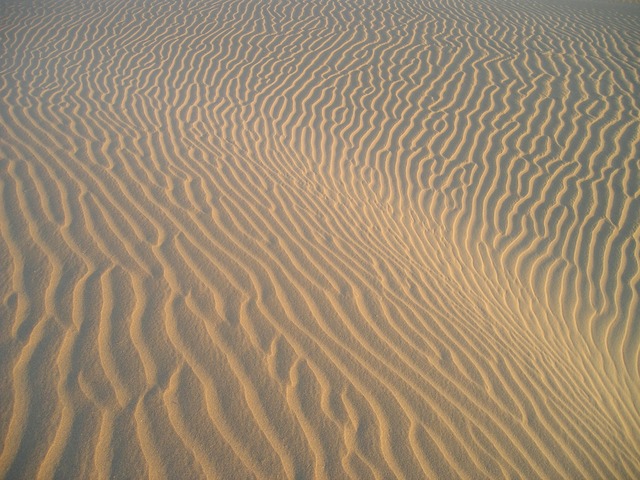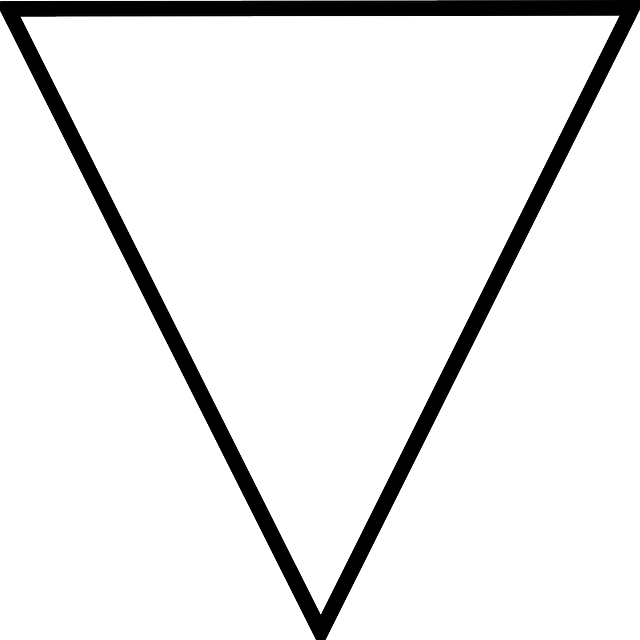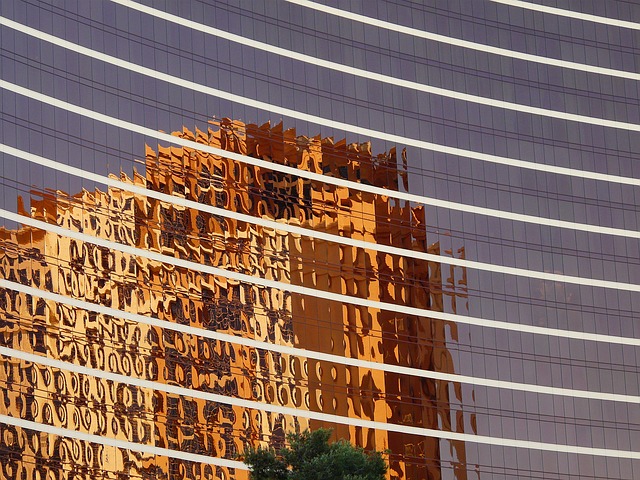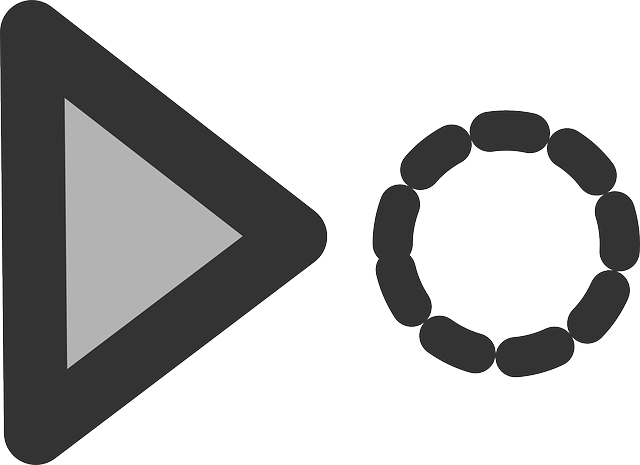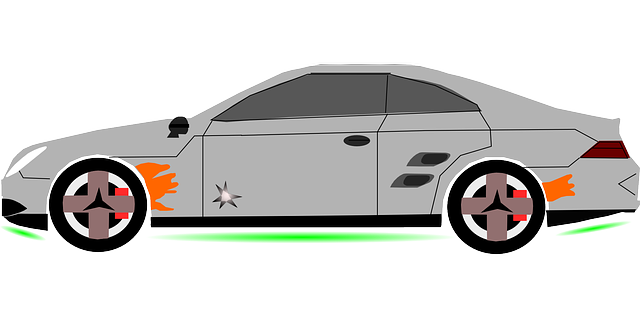مزولة
المـِزْوَلة أقدم جهاز معروف لفهم الوقت، تعتمد على حقيقة حتى ظل الشيء يتحرك من إحدى جهتيه إلى الجهة الأخرى عندما تتحرك الشمس من الشرق إلى الغرب.
تاريخ المزولة
تعتبر المزولة من أقدم الآلات الفهمية المعروفة في قياس الوقت. وخلال التاريخ بأسره، كان الزمن يقاس من خلال حركة الأرض بالنسبة للشمس والنجوم. ويرجع تاريخ أول ساعة إلى عام 3500 ق.م. وهي ساعة الظل وكانت تعبير عن عصا أومسلة عمودية تلقي بظلال. وما زالت توجد ساعة ظل مصرية يرجع تاريخها إلى القرن الثامن قبل الميلاد، وفي القرن الثالث قبل الميلاد، وصف الفلكي بيروسوس (اشتهر بين عامي 300 و260 قبل الميلاد) أول مزولة شمسية نصف كروية، ومن بين الوسائل المستخدمة في حساب الساعات في حالة غياب ضوء الشمس، ثم كانت الممارسة الصينية التي مؤداها حرق حبل معقود وملاحظة طول المدة الزمنية التي يستغرقها انتنطق النار من عقدة لأخرى وكذلك الشمعة المسننة. ويوجد في المتاحف اليوم نماذج من مصر يرجع تاريخها إلى القرن الخامس قبل الميلاد وأعداد كبيرة من المزاول الضخمة التي تعود إلى الكثير من المدن اليونانية القديمة. أما المزاول الصغيرة المحمولة فقد ظهرت لأول مرة في العصر الروماني وظلت شائعة الانتشار حتى القرن التاسع عشر.
عُرِفت المزولة في بابل نحوعام 2000 ق.م. فقد وضع بيروسيس ـ وهوأحد الكهنة والأدباء البابليين ـ أول تصميم للمزولة، وكان ذلك خلال القرن الثالث قبل الميلاد. وكانت مزولته نصف كرة مجوفة، أوعلى شكل قبة أطرافها مسطَّحة، وتوجد خرزة صغيرة مثبَّتَة في وسطها. وأثناء النهار يتحرك ظل الخرزة في قوس دائري مُقَسّم إلى 12 جزءًا متساويًا، وأُطْلق على تلك الأجزاء، الساعات المؤقتة؛ لأنها تتغير مع الفصول. تم اختراع الساعات المتساوية نحوعام 1400م عندما اخترعت الساعة.
وتتكون المزولة من سطح مستوٍ (قرص مُدرّج) وعقرب الساعة. وينقسم القرص المدرَّج إلى ساعات وأحيانًا أنصاف أوأرباع الساعة، أما العقرب فكانت بترة مسطحة من المعدن تُثبَّت في منتصف القُرص وتُشير إلي اتجاه القطب الشمالي، في النصف الشمالي من الكرة الأرضية، وإلى القطب الجنوبي في النصف الجنوبي للكرة الأرضية. وتشير الحافة العليا للعقرب إلى أعلى من سطح القرص المُدرَّج في زاوية مساوية لخط عرض مسقط المزولة.
واكتشف المسلمون المزاول إبان توسعهم في العالم اليوناني في القرن السابع الميلادي. وكان استخدامها لقياس الوقت ولتحديد أوقات الصلاة، وساهم الفلكيون المسلمون بشكل جوهري في هذا الفهم من الناحيتين النظرية والتطبيقية معا، ولقد وجدت مزاول بأشكال مختلفة، في نهاية القرون الوسطى في أغلب المساجد الكبرى في العالم الإسلامي. وتحمل أغلب المز اول الإسلامية خطوطا للساعات -زمنية أواعتدالية- ولصلاتي الظهر والعصر، وبما حتى بدء هاتين الصلاتين يتحدد بواسطة أطوال الظل، لذلك كان تعيين أوقات الصلاة بواسطة المزولة ملائماً تماماً، وفي دمشق في القرن الثاني الهجري / الثامن الميلادي، كان الخليفة عمر بن عبد العزيز قد استخدم مزولة لتحديد أوقات الصلاة النهارية بواسطة ساعات زمنية.
وتعد أقدم مزولة إسلامية حفظتها الأيام هي من خلق ابن الصفار الفلكي الشهير الذي عمل في قرطبة في القرن الرابع الهجري / العاشر الميلادي. والمزولة من الطراز الأفقي، وتتضمن خطوطا لكل ساعة زمنية، وقد اتى بعضها متكسرا عند تقاطعه مع أثر الظل للاعتدال، والأثر بدوره غير مستقيم. كما حتى هنالك خطا لصلاة الظهر. أما خط صلاة العصر والشاخص فكلاهما مفقود. لكن طوله مبين بواسطة نصف قطر الدائرة المنقوشة على المزولة.
أما المزاول التونسية فكانت أكثر إتقانا. وتظهر المزولة التي صنعها أبوالقاسم بن الشداد عام 746 هـ / 1345 م، فقط ساعات النهار التي تحمل معاني دينية ولا تعطي الساعات الزمنية. أما فترة ما بعد الظهر فقد رسمت بشكل منحنيات الظهر والعصر بالتوافق. أما الفترة الصباحية، فهناك منحن للضحى متناظر مع منحن العصر نسبة إلى خط الزوال.
كما حتى هناك خطا للساعات الموافقة لنظام التأهيب أي ساعة اعتدالية قبل الظهر، والنظام هذا مرتبط بالعبادة الجماعية يوم الجمعة. إذا تناظر منحنيات الضحى والعصر على المزولة هوالذي يؤدي، وللمرة الأولى إلى فهم تحديد أوقات الصلاة النهارية في الإسلام. كما يظهر التفحص المتنبه للخطوط على المزولة، حتى منحنيات انقلاب الشمس مرسومة كأقواس دوائر وليس كقطوع زائدة.
وأما الفلكي ابن الشاطر، وهورئيس الموقتين في الجامع الأموي في دمشق في منتصف القرن الرابع الهجري / العاشر الميلادي، فقد خلق في عام 772هـ / 1371 م مزولة أفقية قوامها متران على متر تقريبا. وقد نصبت في باحة المسجد في الجهة الجنوبية من المئذنة الرئيسية للجامع، ولا تزال أجزاؤها معروضة في حديقة المتحف الوطني في دمشق. وقد خلق الموقت الطنطاوي في عام 1293هـ / 1876 م نسخة مطابقة للأصلية، مازالت مستقرة أيضا في مكانها على المئذنة.
تملك مزولة ابن الشاطر ثلاث مجموعات أساسية من الخطوط، وهناك ثلاث مزاول منقوشة على البلاطة الرخامية. والمزولة الصغيرة مع الشخص الخاص بها، في الجهة الشمالية، تحمل خطوطا للساعات الزمنية ولصلاة العصر. كما حتى المزولة الصغيرة، في الجهة الجنوبية تحمل خطوطا للساعات الاستوائية لفترة ما قبل الظهر وما بعده، وكذلك لفترة ما بعد شروق الشمس وما قبل غروبها. والشاخص المتوازي مع محور القبة السماوية متراصف ببراعة مع الشاخص الأكبر للمزولة الثالثة والرئيسية.
وتحمل هذه المزولة الأخيرة خطوطا مطابقة لفواصل زمنية قبل الظهر وبعده، كذلك لفواصل استوائية انطلاقا من شروق الشمس حتى الظهر، وفواصل قبل غروب الشمس انطلاقا من الظهر. هناك أيضا منحنيات موافقة لفواصل حتى صلاة العصر انطلاقا من ساعتين قبل الصلاة، كما حتى هناك منحنيات للساعتين الثالثة والرابعة بعد الفجر وقبل هبوط الليل. ثم هناك منحن للحظة الواقعة قبل فجر اليوم التالي بثلاث عشر ساعة ونصف الساعة.
إلى غير ذلك يمكن استعمال المزولة لقياس الوقت المنقضي بعد شروق الشمس في فترة الصباح، والوقت المتبقي للانقضاء قبل غروبها في فترة ما بعد الظهر، وكذلك الوقت قبل الظهر وبعده. وتقيس هذه المزولة الوقت بالنسبة إلى صلاتي الظهر والمغرب، ويسمح منحنى العصر فيها بقياس الوقت بالنسبة إلى هذه الصلاة. كما تستخدم المنحنيات المرتبطة بهبوط الليل وقيام النهار لقياس الوقت بالنسبة إلى صلاتي العشاء والفجر، فعندما يقع الظل على هذه الخطوط، عملى الموقت حتى يعهد حتى العشاء تبدأ بعد أربع أوثلاث ساعات.
مزولات بمعراف محوري ثابت
مزولة أفقية
In the horizontal sundial (also called a garden sundial), the plane that receives the shadow is aligned horizontally, rather than being perpendicular to the style as in the equatorial dial. Hence, the line of shadow does not rotate uniformly on the dial face; rather, the hour lines are spaced according to the rule
- '"`UNIQ--postMath-00000001-QINU`"'
where λ is the sundial's geographical latitude (and the angle the style makes with horizontal), θ is the angle between a given hour-line and the noon hour-line (which always points towards true North) on the plane, and t is the number of hours before or after noon. For example, the angle θ of the 3pm hour-line would equal the arctangent of sin(λ), since tan(45°) = 1. When λ equals 90° (at the North Pole), the horizontal sundial becomes an equatorial sundial; the style points straight up (vertically), and the horizontal plane is aligned with the equatorial place; the hour-line formula becomes θ = 15° × t, as for an equatorial dial. However, a horizontal sundial is impractical on the Earth's equator, where λ equals 0°, the style would lie flat in the plane and cast no shadow.
The chief advantages of the horizontal sundial are that it is easy to read, and the sun lights the face throughout the year. All the hour-lines intersect at the point where the gnomon's style crosses the horizontal plane. Since the style is aligned with the Earth's rotational axis, the style points true North and its angle with the horizontal equals the sundial's geographical latitude λ. A sundial designed for one latitude can be used in another latitude, provided that the sundial is tilted upwards or downwards by an angle equal to the difference in latitude. For example, a sundial designed for a latitude of 40° can be used at a latitude of 45°, if the sundial plane is tilted upwards by 5°, thus aligning the style with the Earth's rotational axis.
مزولة رأسية
In the common vertical dial, the shadow-receiving plane is aligned vertically; as usual, the gnomon's style is aligned with the Earth's axis of rotation. As in the horizontal dial, the line of shadow does not move uniformly on the face; the sundial is not equiangular. If the face of the vertical dial points directly south, the angle of the hour-lines is instead described by the formula
- '"`UNIQ--postMath-00000002-QINU`"'
where λ is the sundial's geographical latitude, θ is the angle between a given hour-line and the noon hour-line (which always points due north) on the plane, and t is the number of hours before or after noon. For example, the angle θ of the 3pm hour-line would equal the arctangent of cos(λ), since tan(45°) = 1. Interestingly, the shadow moves counter-clockwise on a South-facing vertical dial, whereas it runs clockwise on horizontal and equatorial dials.
Dials that face due South, North, East or West are called vertical direct dials. If the face of a vertical dial does not face due South, the hours of sunlight that the dial receives may be limited. For example, a vertical dial that faces due East will tell time only in the morning hours; in the afternoon, the sun does not shine on its face. Vertical dials that face due East or West are polar dials, which will be described below. Vertical dials that face North are rarely used, since they tell time only before 6am or after 6pm, by local solar time. For non-direct vertical dials — those that face in non-cardinal directions — the mathematics of arranging the hour-lines becomes more complicated, and is often done by observation; such dials are said to be declining dials.
مزولة الجيب
This portable folding German sundial has a string gnomon (pointer), adjustable for accuracy at any latitude. As shadows fall across the sundial, the smaller dials show Italian and Babylonian hours. The dial also indicates the length of the day and the position of the sun in the zodiac.
المزولة القطبية
In polar dials, the shadow-receiving plane is aligned parallel to the gnomon-style. Thus, the shadow slides sideways over the surface, moving perpendicularly to itself as the sun rotates about the style. As with the gnomon, the hour-lines are all aligned with the Earth's rotational axis. When the sun's rays are nearly parallel to the plane, the shadow moves very quickly and the hour lines are spaced far apart. The direct East- and West-facing dials are examples of a polar dial. However, the face of a polar dial need not be vertical; it need only be parallel to the gnomon. Thus, a plane inclined at the angle of latitude (relative to horizontal) under the similarly inclined gnomon will be a polar dial. The perpendicular spacing X of the hour-lines in the plane is described by the formula
- '"`UNIQ--postMath-00000003-QINU`"'
where H is the height of the style above the plane, and t is the time (in hours) before or after the center-time for the polar dial. The center time is the time when the style's shadow falls directly down on the plane; for an East-facing dial, the center time will be 6am, for a West-facing dial, this will be 6pm, and for the inclined dial described above, it will be noon. When t approaches ±6 hours away from the center time, the spacing X diverges to +∞; this occurs when the sun's rays become parallel to the plane.
مزولة رأسية مائلة
- '"`UNIQ--postMath-00000004-QINU`"'
where λ is the sundial's geographical latitude, t is the time before or after noon, and η is the angle of declination from true South. When such a dial faces South (η=0°), this formula reduces to the formula given above, tan θ = cos λ tan(15° × t).
When a sundial is not aligned with a cardinal direction, the substyle of its gnomon is not aligned with the noon hour-line. The angle β between the substyle and the noon hour-line is given by the formula
- '"`UNIQ--postMath-00000005-QINU`"'
If a vertical sundial faces true South or North (η=0° or 180°, respectively), the correction β=0° and the substyle is aligned with the noon hour-line.
The height of the gnomon, γ (that is the angle the style makes to the plate) is
- '"`UNIQ--postMath-00000006-QINU`"'
المزولة المتأرجحة
The sundials described above have gnomons that are aligned with the Earth's rotational axis and cast their shadow onto a plane. If the plane is neither vertical nor horizontal nor equatorial, the sundial is said to be reclining or inclining. Such a sundial might be located on a South-facing roof, for example. The hour-lines for such a sundial can be calculated by slightly correcting the horizontal formula above
- '"`UNIQ--postMath-00000007-QINU`"'
where χ is the desired angle of reclining, λ is the sundial's geographical latitude, θ is the angle between a given hour-line and the noon hour-line (which always points due north) on the plane, and t is the number of hours before or after noon. For example, the angle θ of the 3pm hour-line would equal the arctangent of sin(λ+χ), since tan(45°) = 1. When χ equals 90° (in other words, a South-facing vertical dial), we obtain the vertical formula above, since sin(λ+90°) = cos(λ).
المزولة المتأرجحة المائلة
Some sundials both decline and recline, in that their shadow-receiving plane is not oriented with a cardinal direction (such as true North) and is neither horizontal nor vertical nor equatorial. For example, such a sundial might be found on a roof that was not oriented in a cardinal direction. The formulae describing the spacing of the hour-lines on such dials are rather complicated. The angle θ between the noon hour-line and another hour-line has two components θ = θ1 + θ2, described by the formulae
- '"`UNIQ--postMath-00000008-QINU`"'
- '"`UNIQ--postMath-00000009-QINU`"'
where λ is the sundial's geographical latitude, t is the time before or after noon, and χ and η are the angles of inclination and declination, respectively.
As in the simpler declining dial, the gnomon-substyle is not aligned with the noon hour-line. The general formula for the angle β between the substyle and the noon-line is given by
- '"`UNIQ--postMath-0000000A-QINU`"'
المزولة الكروية
Among the most precise sundials ever made are two equatorial bows constructed of marble found in Yantra mandir. This collection of sundials and other astronomical instruments was built by Maharaja Jai Singh II at his then-new capital of Jaipur, India between 1727 and 1733. The larger equatorial bow is called the Samrat Yantra (The Supreme Instrument); standing at 27 meters, its shadow moves visibly at 1 mm per second, or roughly a hand's breadth (6 cm) every minute.
المزولات الأسطوانية والقمعية وغير المستوية
مزولات غير تقليدية
مزولة بنوي
المزولة الرقمية
A digital sundial uses light and shadow to 'write' the time in numerals rather than marking time with position. One such design uses two parallel masks to screen sunlight into patterns appropriate for the time of day.
علامات الظهيرة
معرض الصور
A Scottish gravestone bearing a sundial. The instrument has often doubled as a memento mori.
This sundial displays a likeness of Father Time. Its motto quotes Robert Browning: "Grow old along with me; the best is yet to be."
Millennium Park in Taipei, Taiwan, uses the shadow of Taipei 101 to mark afternoon hours for the skyscraper's occupants.
Marble equatorial sundial in the Europapark of Klagenfurt on Lake Woerth, Carinthia, Austria
Martin Bernhardt created a special gnomon for an equatorial sundial which adjusts for the equation of time and that allows one to read the time without knowing the date, to a precision of less than a minute.
The Giant Sundial of Jantar Mantar in Jaipur, India, also known as the Samrat Yantra (The Supreme Instrument), stands 27m tall. Its shadow moves visibly at 1 mm per second, or roughly a hand's breadth (6 cm) every minute.
Shadow of Taipei 101 in Taiwan. A circular park (bottom) acts as the face of a huge horizontal sundial using the skyscraper as its style.
A modern hemispherium in Gyeongbok Palace in Seoul, South Korea. The tip of the pointer serves as the nodus; the height of the nodus-shadow within the bowl gives the time of the year. Since the picture was taken on 24 November, the sun is low in the sky, and the nodus-shadow higher in the bowl.
Jantar Mantar observatory (Delhi) is a giant version of the spherical sundial.
Several sundials arrayed on the faces of a cube. The styles are all parallel and meant to be aligned with the Earth's rotation axis. Such an array of sundials is not self-aligning, however.
انظر أيضاً
- بندول فوكو
- Francesco Bianchini
- مزولة قمرية
- Nocturnal — device for determining time by the stars at night.
- Scottish sundial — the ancient renaissance sundials of Scotland.
- Tide (time) — devisions of the day on early sundials.
- Wilanów Palace Sundial, created by Johannes Hevelius in about 1684.
مرئيات
|
الساعة الشمسية التي صنعها ابن الشاطر في الجامع الأموي بدمشق، والتي تستخدم حتى وقتنا هذا لضبط مواعيد الأذان في الجامع. |
الهامش
- ^ Rohr (1965), pp. 49-53; Waugh (1973), pp. 35-51; Mayall and Mayall (1994), pp. 56, 99-101, 143-144.
- ^ Rohr (1965), p. 52; Waugh (1973), p. 45.
- ^ Many ornamental sundials are designed to be used at 45 degrees north. A sundial designed for one latitude can be adjusted for use at another latitude by tilting its base so that its style, or gnomon, is parallel to the Earth's axis of rotation and pointing in the direction of the north celestial pole in the northern hemisphere, or the south celestial pole in the southern hemisphere. Some mass-produced garden sundials fail to correctly calculate the hourlines so can never be corrected. A local standard time zone is nominally 15 degrees wide, but may be modified to follow geographic or political boundaries. A sundial can be rotated around its style (which must remain pointed at the celestial pole) to adjust to the local time zone. In most cases, a rotation in the range of 7.5 degrees east to 23 degrees west suffices. This will introduce error in sundials that do not have equal hour angles. To correct for daylight saving time, a face needs two sets of numerals or a correction table. An informal standard is to have numerals in hot colors for summer, and in cool colors for winter.
- ^ Rohr (1965), pp. 53-69; Waugh (1973), pp. 52-99; Mayall and Mayall (1994), pp. 57-58, 102-107, 141-143, 146-151.
- ^ Rohr (1965), p. 55; Waugh (1973), p. 52.
- ^ Rohr (1965), pp. 54-55; Waugh (1973), pp. 52-69
- ^ Rohr (1965), pp. 55-69; Waugh (1973), pp. 74-99; Mayall and Mayall (1994), p. 58.
- ^ Rohr (1965), p. 72; Waugh (1973), pp. 70-73; Mayall and Mayall, pp. 58, 107-112.
-
^ خطأ استشهاد: وسم
<ref>غير سليم؛ لا نص تم توفيره للمراجع المسماةRohr 1965, p. 79 - ^ Mayall and Mayall, p. 238.
- ^ Rohr (1965), pp. 70-81; Waugh (1973), pp. 100-107; Mayall and Mayall (1994), pp. 59-60, 117-122, 144-145.
- ^ Rohr (1965), p. 77; Waugh (1973), pp. 101-103; Capt. Samuel Sturmy (1683). The Art of Dialling. London: Unknown publisher.
- ^ Rohr (1965), pp. 76-81; Waugh (1973), pp. 106-107; Mayall and Mayall, 122-125.
- ^ Rohr (1965), pp. 77-78.
- ^ Rohr (1965), pp. 78-79; Waugh (1973), pp. 106-107; Mayall and Mayall, 59-60.
- ^ Rohr (1965), p. 78.
- ^ Rohr (1965), pp. 118-119; Mayall and Mayall (1994), pp. 215-216.
مراجع
-
Earle AM (1971). Sundials and Roses of Yesterday. Rutland, VT: Charles E. Tuttle. ISBN [[Special:BookSources/0-8048-0968-2, LCCN 74-142763|0-8048-0968-2, [[Library of Congress Control Number|LCCN]] [http://lccn.loc.gov/74142763 74-142763]]] Check
|isbn=value: invalid character (help). Reprint of the 1902 book published by Macmillan (New York). - A.P.Herbert, Sundials Old and New,Methuen & Co. Ltd, 1967.
- Mayall RN, Mayall MW (1994). Sundials: Their Construction and Use (3rd ed.). Cambridge, MA: Sky Publishing. ISBN .
- Hugo Michnik, Theorie einer Bifilar-Sonnenuhr, Astronomishe Nachrichten, 217(5190), p. 81-90, 1923
- Rohr RRJ (1996). Sundials: History, Theory, and Practice (translated by G. Godin ed.). New York: Dover. ISBN . Slightly amended reprint of the 1970 translation published by University of Toronto Press (Toronto). The original was published in 1965 under the title Les Cadrans solaires by Gauthier-Villars (Montrouge, France).
- Frederick W. Sawyer, Bifilar gnomonics, JBAA (Journal of the British Astronomical association), 88(4):334–351, 1978
- Gerard L'E. Turner, Antique Scientific Instruments, Blandford Press Ltd. 1980 ISBN 0-7137-1068-3
- J.L. Heilbron, The sun in the church: cathedrals as solar observatories, Harvard University Press, 2001 ISBN 978-0674005365.
- Make A Sundial, (The Education Group British Sundial Society) Editors Jane Walker and David Brown, British Sundial Society 1991 ISBN 0-9518404-0
- Waugh AE (1973). Sundials: Their Theory and Construction. New York: Dover Publications. ISBN .
- "Illustrating Shadows", Simon Wheaton-Smith, ISBN 0-9765286-8-1, LCN: 2005900674
- also see "Illustrating More Shadows", Simon Wheaton-Smith, both books are over 300 pages long.
المصادر
الموسوعة المعهدية الكاملة
- مسقط الأرقام
وصلات خارجية
| مشاع الفهم فيه ميديا متعلقة بموضوع Sundials. |
- British Sundial Society
- North American Sundial Society
- De Zonnewijzerkring - Dutch Sundial Society (in English)
- Societat Catalana de Gnomònica - Catalonian Sundial Society
- Zonnewijzerkring Vlaanderen - Flemish Sundial Society
- Coordinamento Gnomonico Italiano (CGI) - Italian Sundial Society
- La Commission des Cadrans solaires du Québec (CCSQ) - Commission on Sundials of Quebec
- Asociación de Amigos de los Relojes de Sol (AARS) - Spain, Association of Friends of the Sundial
- The Ancient Vedic Sun Dial



